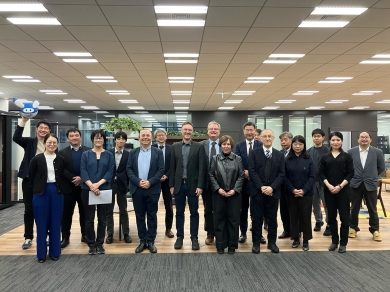ESA, Eutelsat, Airbus, MediaTek and partners successfully Test 5G-Advanced NR-NTN Connection over OneWeb LEO Satellites with Conditional Handover
3 Nov 2025
The innovative 5G protocol, introducing Conditional Handover, allows satellites in low Earth orbit (LEO) to provide reliable connectivity whilst switching between ground and satellite infrastructures, advancing the integration of terrestrial and non-terrestrial networks.







